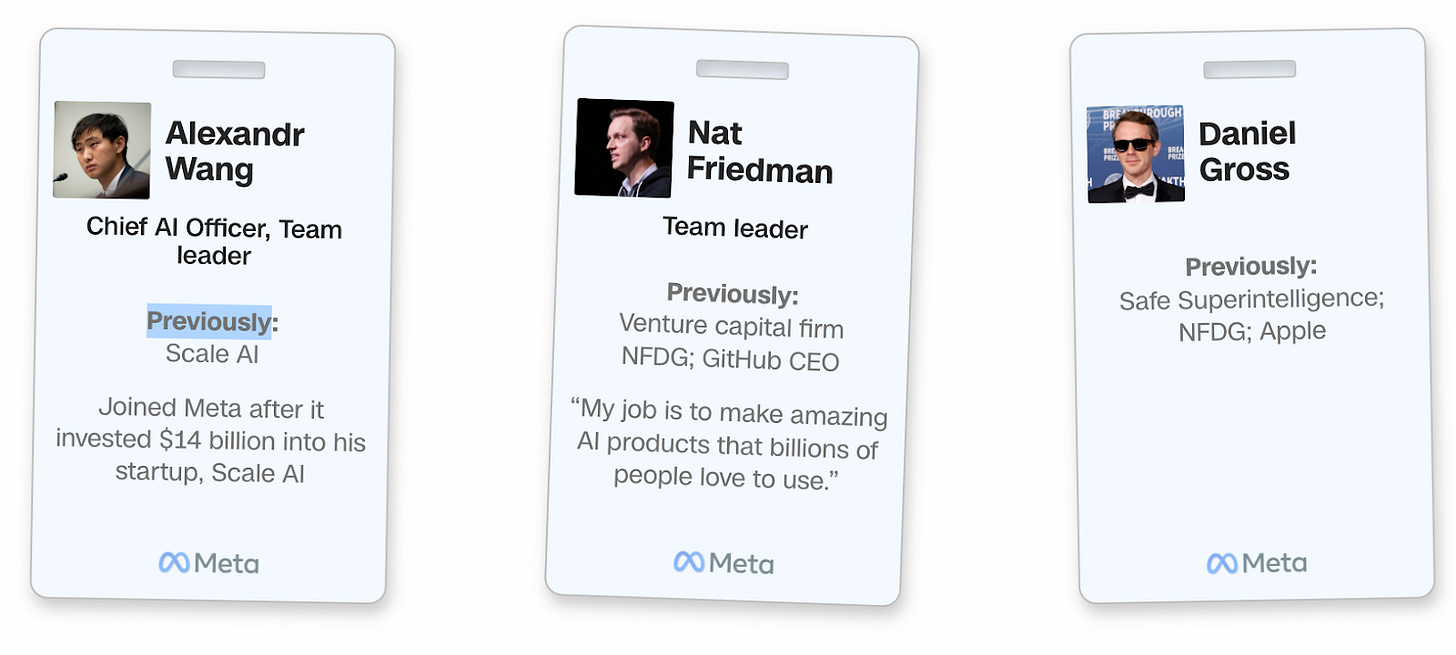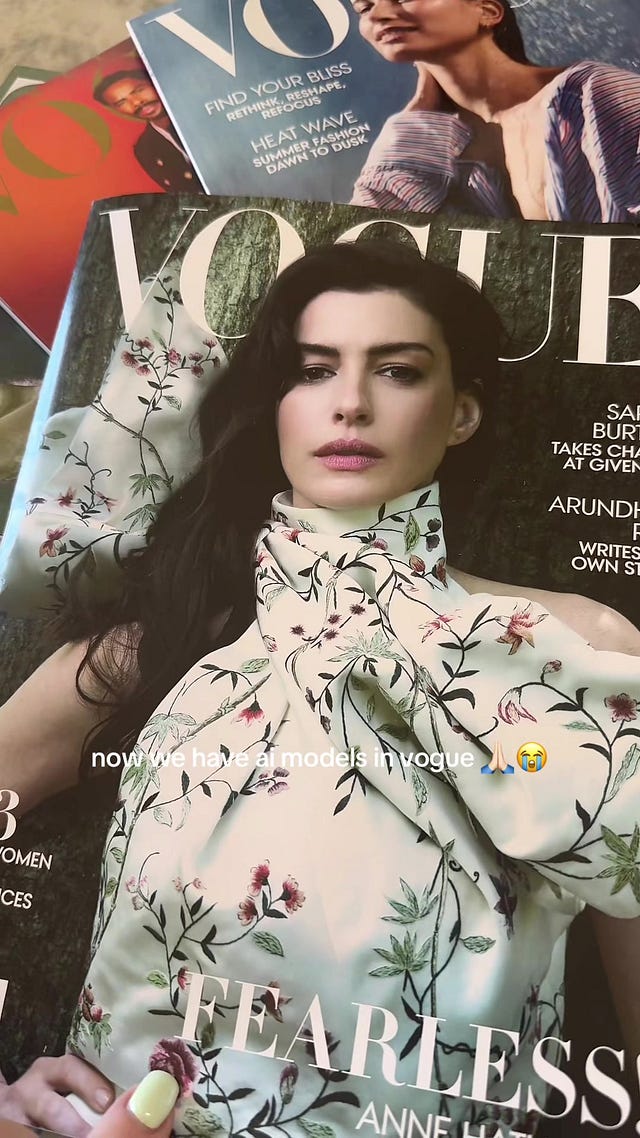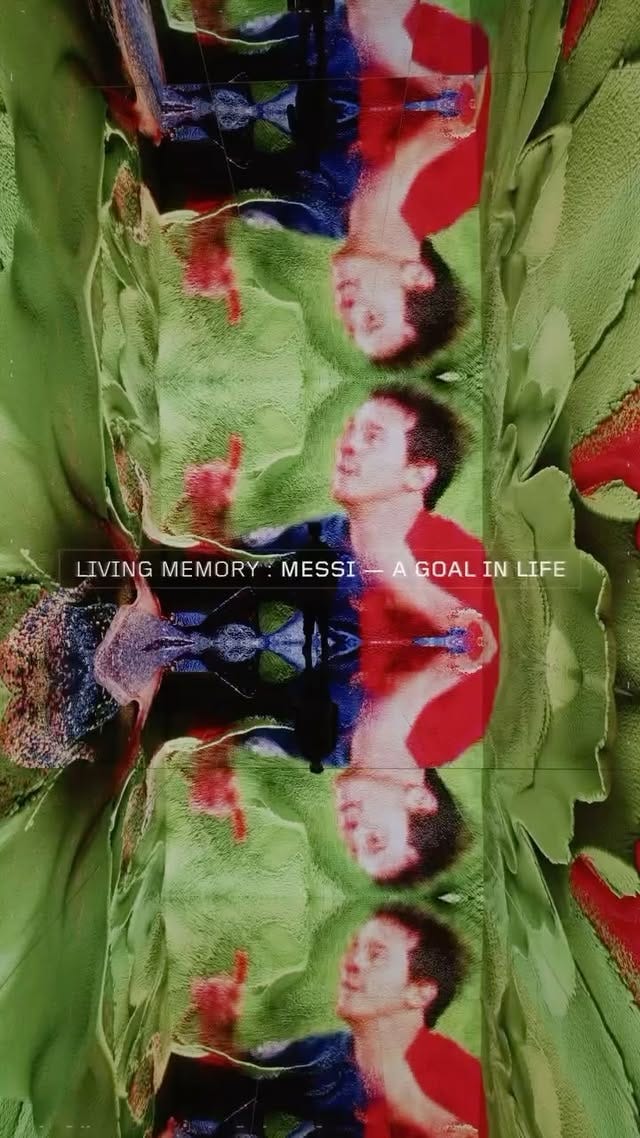Render Time: July 28 Edition
AI talent wars escalate, YouTube rewrites virality, and creators face an uncertain future.
Meta is currently assembling superintelligence dream team, YouTube Shorts got a generative glow-up, and creators across Europe watch a YouTuber face prison…for reviewing handheld consoles.
Yep, we've officially crossed into the territory where reality feels stranger than fiction.
From nostalgia-fueled hardware launches to Bangkok’s $1 billion bet on becoming Asia’s next creative hub, we're diving into another wild week of video’s future.
Top News
Zuckerberg Assembles his AI Avengers
Zuckerberg isn’t hiding it anymore.
He wants to be the first to build artificial superintelligence. AI that surpasses humans at every cognitive task, not just some.
Obvioulsy, we’re not there yet but if Zuckerberg is the first to get us there here’s what an an artificial superintelligence could do:
Understand every scientific paper ever written. Then write the next ten years of them overnight.
Learn any human language instantly, including the ones we’ve forgotten.
Optimize traffic in every city, crop yields on every farm, and maybe your sleep schedule too.
Detect patterns in climate, economics and culture we’ve missed for decades.
Diagnose illnesses in nanoseconds, conditions take teams of doctors weeks or months to identify.
If it sounds like a Lex Luthor subplot, it feels like one too, Zuckerberg is throwing serious money at top AI minds around the world to make it real.
So far his recruitment looks like this:
Rumors are Meta is offering up to $100m fees to hire talent. However there are rumors of figures even far exceeding that.
So what would a potential Meta superintelligence really mean for video?
For creators, the implications aren’t theoretical. Smaller versions of Meta’s Llama models are already inside Instagram. Editing tools are learning how to suggest your next move whether it's a filter, a voiceover, or a caption that syncs with trending audio.
There are whispers of AI-generated trailers, dynamic Reels overlays, synthetic speech stitched from your own voice.
It’s easy to picture a future where you upload a rough idea and superintelligence offers you a menu of creative options: tone, pacing, visual style, soundtrack.
The real question isn’t whether the AI tools will get more powerful. They will.
It’s whether creators will still feel like they’re in the director’s chair or just nudging sliders while the platform decides what plays.
AI Model Lands Spot in Vogue
What was the Drake line again? “Don't tell me that you model if you ain't been in Vogue” Well, that statement no longer applies to AI.
In the August issue of Vogue US, a full-page Guess ad introduced a new face generated by AI.
Featured was a blonde woman in hyper-real styling: smooth skin, perfect symmetry, and polished teeth that almost seem too pristine to be real. While it’s unclear how much of the image is AI-generated; that’s besides the point.
People likely wouldn’t have said anything until they read the fine print:
“Produced by Seraphinne Vallora on AI.”
Magazines spreads have featured models airbrushed to the heavens for decades and the AI model featured is near-indistinguishable to the “real” thing.
The model is not obviously AI in the context of a glossy fashion magazine like Vogue.
That’s probably why the backlash has been so swift.
 Tiktok failed to load.
Tiktok failed to load.Enable 3rd party cookies or use another browser
Beyond the outrage lies a real cultural shift. Fashion is being reimagined and while AI may never replace human creativity, it’s already challenging how we define images.
An image and our own.
Musk resurrects Vine
Elon Musk is trying to bring Vine to life. But this isn’t 2013, and the comeback isn’t about looping six-second comedy sketches. This Vine reboot will exist entirely within X (formerly Twitter) powered, naturally, by generative AI.
Musk’s plan is ambitious, even strange: instead of filming, you'll type out a text prompt like "skater raccoon at golden hour" and the upcoming xAI "Imagine" model will instantly turn it into a looping video.
To fast-track the tech, X acquired Hotshot, a startup specializing in AI-generated real-time video. They're already calling it Vine 2.0 meets ChatGPT, envisioning a timeline packed with infinitely remixable, instantly shareable AI content.
But if X already struggled to moderate human-made posts, what happens when users can effortlessly churn out dozens of AI-generated clips per minute?
Still, nostalgia is a powerful force and so is curiosity. In an internet culture constantly hungry for throwbacks and fresh toys, maybe an AI-fueled Vine is exactly bizarre enough to win.
YouTube Retires the Trending Tab And Virality Gets Personal
On July 23, YouTube ended the era of its Trending tab.
Once the internet’s main stage for viral hits like Gangnam Style and Harlem Shake. What replaces it is a tailored, algorithm-driven discovery system.
Instead of one universal feed, YouTube Charts steps in, breaking down popularity by niche: Music, Podcasts, Gaming, Movies.
Creators also gained a new Inspiration tab inside YouTube Studio, highlighting trending topics uniquely suited to their audience, style, and upload history.
Meanwhile, viewers can now use the “Hype” feature to collectively boost new videos, increasing their chance at algorithmic takeoff.
Up-and-coming creators won’t battle in a general Trending tab anymore. Instead, YouTube’s Explore sections and its official social channels will spotlight emerging talent, offering creators a clearer path to visibility within their niches.
The shift acknowledges something everyone already knew: the monoculture is gone.
Virality now lives in micro-moments, scattered across countless corners of the internet. What's big in Brazilian cooking shorts rarely aligns with what's blowing up in Japanese fashion vlogs.
YouTube’s pivot feels like acceptance: the-one-size-fits-all no longer fits all.
But not everyone is convinced.
Critics say the change sidesteps deeper frustrations of Shorts overshadowing long-form creators, persistent ad fatigue, and opaque algorithms burying new talent.
Personalization sounds promising, but many creators still crave transparency, fairness, and genuine reach not just another clever tab.
YouTube is rewriting what it means to trend. Whether it’s progress or just another illusion of control remains to be seen.
Timeline Watch
YouTuber Faces Jail for Reviewing Game Consoles
Italian tech YouTuber Riccardo Masutti may face 3 years in prison for unboxing Android-based handheld consoles like the Ayn Odin, devices legally sold but capable of emulating games. Authorities claim this violates EU copyright law, even though Masutti didn’t modify them or use pirated software. Digital rights groups call it a dangerous precedent that could criminalize basic tech reviews and chill creator content across the EU.Maingear Drops a 90s-Inspired Power Rig
The Retro95, launched July 23, wraps 2025 performance in a full ’90s aesthetic, beige chassis, turbo button, LED indicators. Under the hood: liquid cooling, RTX 4090, and full customization. It’s a nostalgic flex for creators who want throwback vibes without sacrificing DaVinci or Unreal horsepower. Limited edition, with prices starting near $3,000. Yikes.
Money Moves
This past week, over $320 million in new funding went toward creative tech: from AI toolkits to video editing startups and background VFX models. Investors are doubling down on behind-the-scenes tech that helps creators scale smarter, not louder.
Creator Economy Shifts Toward Sustainability: WPP now predicts creator-driven platforms like YouTube, TikTok, and Instagram will overtake traditional media ad revenue in 2025. Creators are projected to earn $185 billion, with 60% coming from brand deals a major pivot toward long-term monetization, not just viral spikes. Read more
Fantastic Four: First Steps Scores $24.4M in Previews: Marvel’s retro reboot opened with the biggest preview gross of 2025, topping Superman and signaling a potential $100M+ domestic debut. Strong reviews and global appeal could help reignite Marvel’s box office streak. Read more
Global Playback
Thailand Builds a 250k m² Studio Campus
Bangkok is about to become a content capital. Cloud 11, a massive new vertical campus opening later this year, is being positioned as Southeast Asia’s answer to Hudson Yards meets YouTube Space.
The 250,000+ square meter development will house film and audio studios, co-working spaces, music academies, and even a public creative park. Major global players like New York Film Academy and 1500 Sound Academy are already launching their first-ever Southeast Asia campuses onsite.
Thailand has long been a hotspot for location shoots but now it wants to own the entire pipeline: production, talent, training, and IP incubation.
Cloud 11 is designed to keep creators local while attracting global partners. Think less outsourcing hub, more cultural powerhouse.
Read more
Christies sell Messi’s Memory for $1.87M
Christie’s just auctioned off Living Memory: Messi: A Goal in Life, an AI-generated data sculpture by Refik Anadol, for a total $1.87 million.
The piece, created in collaboration with Messi himself, reimagines his favorite goal, a 2009 Champions League header using match data, crowd noise, biometric movement, and broadcast footage.
The result is an eight-minute generative swirl of light and motion. Something between memory and myth.
Art reviews from places like Hyperallergic called it soulless. They weren’t wrong. There's no pub noise. Or ciggie smoke. No bad call from the ref. Just the moment distilled into data; looping, polished and ambient.
It looks more like a screensaver than a story.
But maybe that’s the point.
In an age where memory is becoming interactive, editable, and AI-generated, Living Memory might be less about the goal and more about what it means to remember anything through a machine.
It’s the kind of artwork you see projected across a massive screen and think: this has absolutely nothing to do with cleats, sweat, or scraped knees but it’s beautiful.
And if we were one of the 500+ bidders? Yeah, we might’ve said fuck it and chipped in too.
Read more










